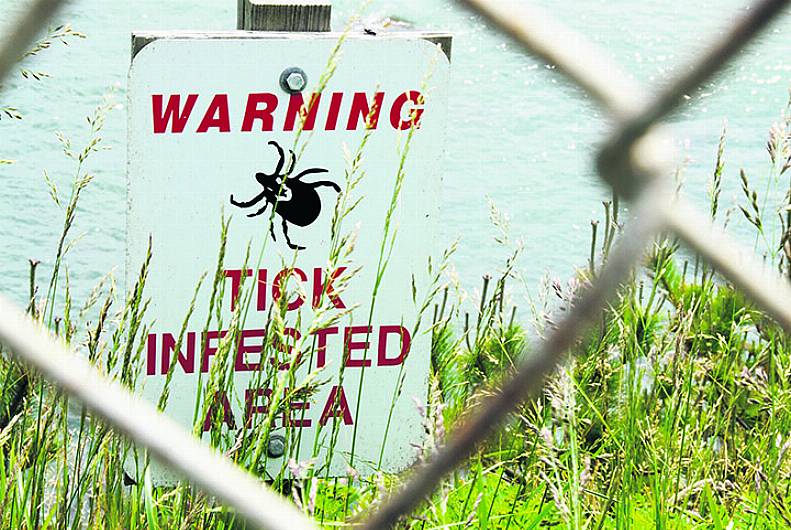With Cork and Kerry now identified as ‘hot spots' for tick bites, the fears that debilitating Lyme disease is on the rise are well-founded, writes Helga Frost
IF you go down to the woods today, you could be in for a big surprise: a nasty encounter with a diseased tick.
In Ireland, the most common Lyme disease causing tick is the castor bean tick, Ixodes ricinus, which could latch on to the skin and cause untold misery, for years into the future.
Cork and Kerry are now identified hot spots for ticks with spring and summer their most active periods.
Lyme ticks live on reptiles, birds and a large variety of mammals. Cats, dogs and horses, are good hosts, but they survive in many different environments.
If left untreated for more than 12-24 hours, a tick bite could have serious consequences, leading to Lyme disease, a particularly nasty and debilitating illness.
Also known as Lyme Borreliosis, it is caused by bacteria of the borrelia type, which is spread by infected ticks.
A common sign of infection is an expanding area of redness on the skin, known as Erythrema Migrans (EM), that begins at the point of the tick bite and spreads, about a week after the bite has occurred.
It is a neurological condition that results in headaches, fevers, joint pains, lethargy, sleep and mobility problems. These can progress to symptoms similar to ME/chronic fatigue, MS, arthritis, fibromyalgia, facial palsy, meningitis, memory loss, sensitivity to light, deafness, seizures and other concerning symptoms.
Not all sufferers have all these symptoms, and many of the symptoms are not specific to Lyme disease. Many sufferers report the illness lasting decades, after changing, then changing again, in severity and focus.
The initial recognided antiobiotic treatment is doxycycline, but this is only effective if given within hours of the tick bite, even though research has shown that some of the Lyme bacteria can survive the antibiotics for a year after the treatment. And in any case, the antibiotics cannot be prescribed for longer than four weeks.
I contracted the condition myself in 2005, and I now specialise in the treatment of Lyme disease by alternative methods to pharmaceuticals.
My focus is on the holistic approach, using herbs, supplements, diet, vitamin protocols, change of lifestyle and exercise, where possible.
The act of removing a tickcan be tricky. Always use tick removers (a special tweezers ), which can be purchased from your local chemist, vet or online. Always wear gloves. I am aware of one case involving a young girl who was removing a tick from her dog, only to be bitten by the tick and she went on to develop the most serious complications, which lasted over six years.
A family member, though well aware of Lyme disease and reminded about wearing protective clothing when taking her dog for a walk, chose to wear sandals. When she arrived home, she noticed a tick embedded on her lower leg, just above her ankle. Despite trying a number of strategies, she was not able to remove the tick. Knowing the implications and suspecting the Lyme tick, she called the ambulance service. They arrived and for two hours tried to remove the tick. Finally the body came away, leaving the head embedded in her leg. She was then taken to the hospital, and though in an area familiar with the Lyme ticks, they too were not able to remove the then-detached head.
Prevention
Hungry ticks are responsive to carbon dioxide (humans and animals exhale carbon dioxide), body heat, odours, physical disturbance and use their stimuli to locate their hosts. So it is advisable that farmers, ramblers, woodland workers, campers, dog walkers, especially in spring and summer, should ensure that their feet, toes and legs, arms, body and head, are protected with a covering.
Also remember to tuck trousers into socks and wear a hat. One doesn’t need to be dressed up like a bee-keeper, but there are sensible precautions to ensure that one doesn’t make it easy for the tick to hop on to one’s body and gain a foothold.
Future
It is worth noting that though Lyme disease sufferers have been reporting their condition for many decades, there is no accurate testing protocol in place and not every organisation wishes to publicise the prevalence of Lyme disease in an area.
The catalyst that propelled Lyme disease into the public arena only occurred because of celebrities suffering with the condition.
This group demanded and were willing to pay for medical attention.
John Caudwell, the UK billionaire, mobile phone retailer, who co-founded Phones 4U, suffered from Lyme disease, as do a number of his family members.
This caused him to set up the charity, Caudwell Lyme.
Unfortunately, too many of the ordinary Lyme disease sufferers in Ireland are still neglected and ignored. Many have suffered for decades – a shameful state of affairs.
When I contracted Lyme disease in 2005, it spurred me to make vigorous enquiries and research, into the means and methods of mitigating the condition, so that I could have a worthwhile life and look forward to the future, with hope and anticipation.
I treat myself with herbs, supplements, vitamins, have a planned diet, I go jogging every day, swim two to three times a week, attend the gym about twice weekly and continue with a demanding professional life, whilst still enjoying gardening and travelling.
So there is hope and light at the end of the tunnel, but it has to be actively worked at and reviewed intermittently.
I have continued my research and treatment plans, and I now have patients nationwide, and worldwide.
Helga Frost BSc (biology), MSc ( zoology) is also a naturopath and herbalist. She runs clincs in Bantry, Schull and Durrus and can be contacted at 027-61050.







